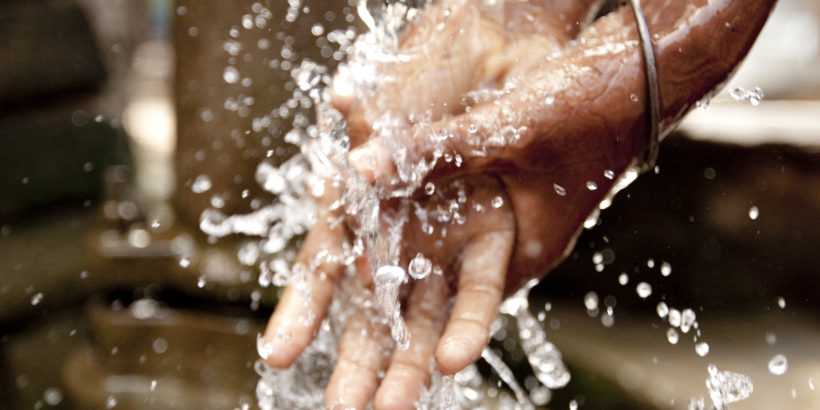Typhoid and water and sanitation issues are inherently linked. As a fecal-oral transmitted disease, typhoid is ingested through contaminated food or water, or from unwashed hands. Similarly, the risk of typhoid can increase when floods overwhelm water or sewer systems, but droughts and a lack of water often drive people to consume contaminated water.
Recently, much of the momentum for taking on typhoid has focused on typhoid conjugate vaccines (TCV). That’s a good thing: the importance of – and potential for – TCV as a way to protect people and lower disease burden is a top story. The current TCV has the potential to be a game changer in the typhoid field: it can be given to children as young as 6 months of age and is therefore available for introduction into routine immunization schedules. It requires fewer doses and offers longer lasting immunity than earlier vaccines. It’s a tool that all typhoid endemic countries should be considering.
However, it’s not the only game changer. Water, sanitation, and hygiene (WASH) is also a powerful prevention tool. But WASH can get complicated, and too often is pushed aside. Part of the problem is that WASH can mean different things. For some, it’s about behavior: drinking and using clean water, purifying water as needed, ending open defecation, using some kind of improved sanitation, and practicing handwashing with soap at key times. For others, it means infrastructure: pipes, wells, bore holes, and sewer lines. It means supplying the water and waste removal systems.
It’s all up for discussion for the next several days during World Water Week in Stockholm. It’s a week where global health and WASH sector experts gather to discuss current water issues – some related to sanitation and hygiene, others to larger health issues, climate change, water access, and so much more.
As advocates of typhoid prevention and control, this is an important week to dig deeper into WASH issues and connect with our colleagues to better understand how we jointly message the importance of WASH to take on typhoid. While in Stockholm, we hope to have strategic conversations about WASH – whether it’s behavior change, infrastructure, climate change, or drug resistance – and how to integrate it with TCV introduction. We want to reconnect on WASH goals, and reiterate how we often carry the same water: vaccines with WASH is the best prevention and control solution for typhoid (and frankly, a host of other pathogens).
The week’s theme about leaving no one behind and moving forward together is hopeful. It means we can think about innovative ways to partner. It means we’re listening on both sides, understanding how we can more comprehensively and collaboratively advocate for WASH with vaccines. This is a chance to refresh our commitment to advocate for WASH as a critical typhoid control tool alongside our advocacy for TCV introduction.
World Water Week is a good reminder that our end goal is the same: reduce typhoid (and other water-borne pathogens) and keep people healthier. The reality is that we need to take on typhoid together. This week we hope to share more about our work, hear from – and listen to – colleagues with new, different, innovative ideas, and identify how we can send typhoid up the river once and for all.
Photo courtesy of ©Sabin Vaccine Institute/Esther Havens



